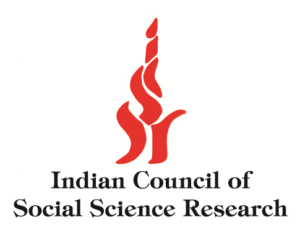Navigating Change: How Fisherfolk Adapt to a Shifting Marine Landscape
In a world increasingly impacted by climate change, the need to adapt is not just a challenge but a necessity, especially for communities whose livelihoods are closely tied to nature. Among these, marine fishing communities face unique challenges, from dwindling fish stocks to rising sea levels. Dr. Krishna Malakar’s study, A Framework to Investigate Drivers of Adaptation Decisions in Marine Fishing: Evidence from Urban, Semi-Urban, and Rural Communities, sheds light on how fisherfolk in Maharashtra, India, are navigating these turbulent waters.
A Framework for Understanding Adaptation
The study sets out to answer a fundamental question: What drives adaptation decisions in fishing communities? By integrating social, economic, and perceptual factors into a unified framework, the research provides insights into how different communities—urban, semi-urban, and rural—respond to environmental and economic stresses.
The approach combines statistical analysis with on-the-ground insights gathered from 601 fishermen through surveys and focus group discussions. This methodology not only ensures a robust dataset but also captures the lived realities of fisherfolk.
Key Drivers of Adaptation
Dr. Malakar’s study identifies several adaptation strategies, including using advanced boats, multiple fishing nets, working longer hours, and even diversifying livelihoods. However, the factors influencing these decisions vary significantly across urban, semi-urban, and rural settings:
- Economic Capital: Access to financial resources, such as subsidies and loans, plays a pivotal role in enabling fishermen to adopt advanced technology, like mechanized boats. Urban and semi-urban fishermen rely more on formal credit, while rural communities lean on informal support and social networks.
- Social Capital: In rural areas, close-knit community ties and shared trust significantly drive adaptation. For example, rural fishermen often collaborate to access resources or information, compensating for their limited financial means.
- Perceptions and Awareness: Urban fishermen tend to have a higher awareness of climate change and its impact on fish populations. This awareness often prompts investments in more sustainable and efficient fishing practices. In contrast, rural and semi-urban communities are more influenced by immediate environmental changes, like extreme weather events.
- Human Capital: Education emerges as a critical enabler. Fishermen with higher education levels are more likely to adopt advanced boats or diversify into other livelihoods, signaling the transformative potential of knowledge.
Regional Nuances
The study highlights stark differences among the three groups:
- Urban Communities: With better access to education and financial resources, urban fishermen are more likely to mechanize their operations. However, the increased costs and competition mean that only a few households diversify into other livelihoods.
- Semi-Urban Communities: These fishermen often find themselves in a middle ground, struggling with limited cooperative membership and weaker infrastructure. Their reliance on informal credit highlights gaps in formal financial support systems.
- Rural Communities: Here, adaptation is driven by social cohesion and trust within the community rather than economic resources. However, the lack of institutional support and formal education remains a significant barrier.
Challenges and Policy Implications
The study doesn’t shy away from addressing the barriers to adaptation. Limited trust in authorities, poorly implemented policies, and inadequate infrastructure are recurring themes. For example, while subsidies are vital, their accessibility remains an issue due to bureaucratic hurdles and favoritism.
Dr. Malakar suggests several interventions to bridge these gaps:
- Improved Financial Support: Tailored credit schemes with liberal eligibility conditions can empower fisherfolk, especially in rural areas.
- Education and Awareness: Programs that educate fishermen about sustainable practices and climate impacts can enhance their adaptive capacity.
- Strengthening Cooperatives: Expanding cooperative membership and ensuring equitable access to benefits can significantly boost adaptation efforts.
- Community Engagement: Policies designed in consultation with fishing communities are more likely to succeed, as they address localized needs and build trust.
A Call to Action
The study serves as a reminder of the resilience and ingenuity of fishing communities. By identifying the drivers of adaptation and the barriers they face, Dr. Malakar provides a roadmap for policymakers, researchers, and practitioners to support these communities in navigating the challenges of a changing marine environment.
In a world where climate impacts are only set to intensify, the ability to adapt is not just a survival strategy—it’s a testament to human resilience and ingenuity. For the fisherfolk of Maharashtra, adaptation is not just about catching fish; it’s about securing their future.





